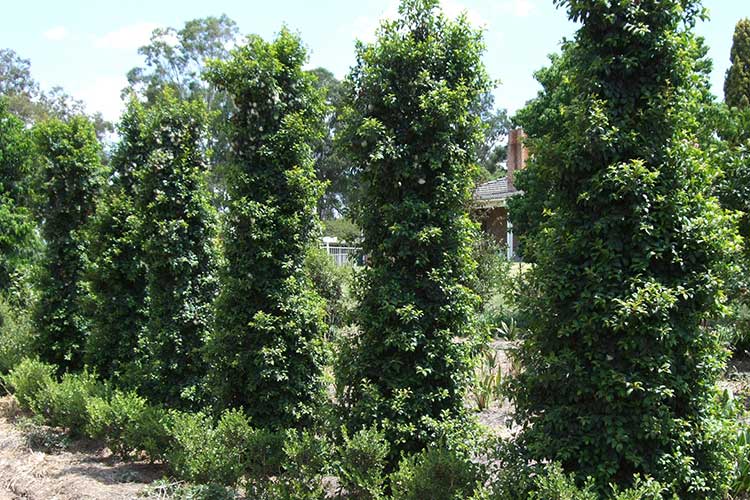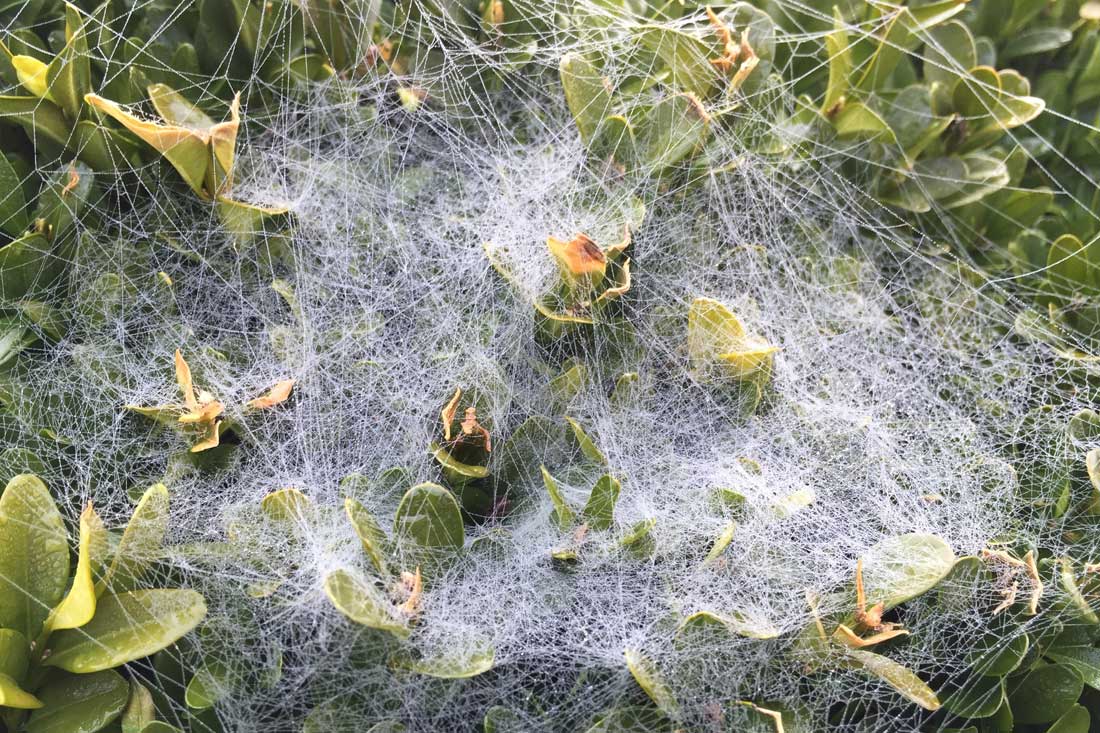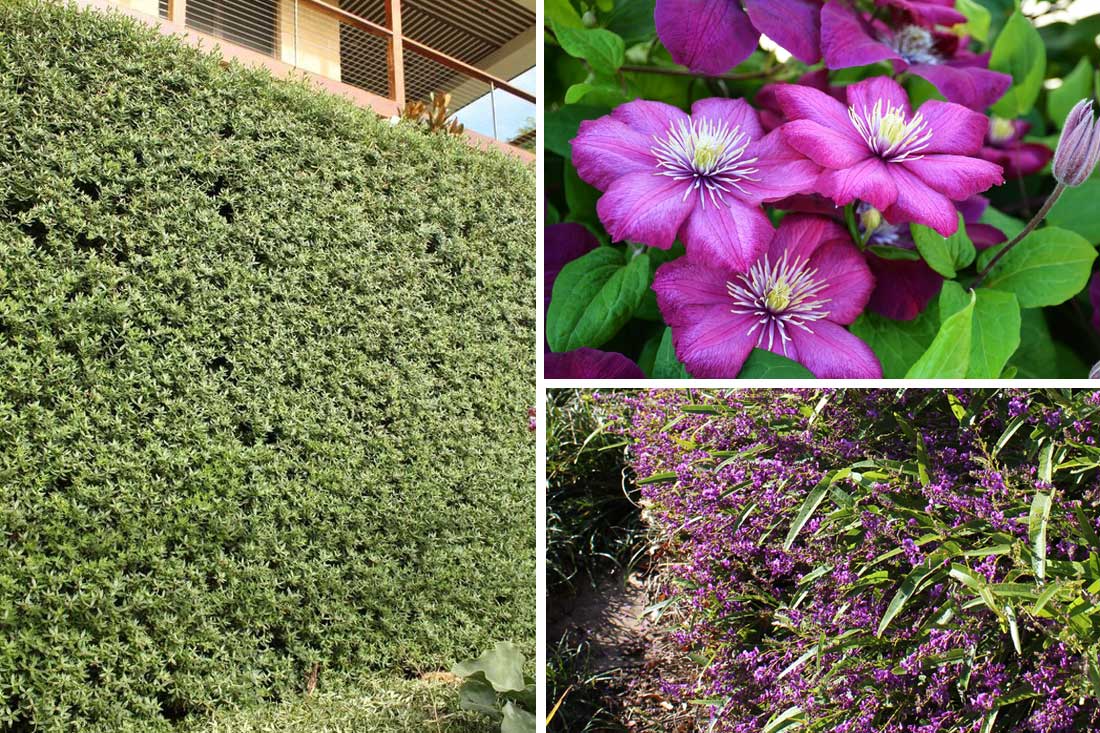It can be difficult to know how many plants are needed to create a new hedge, especially as putting in new plants which are small and seemingly a long way apart can look nothing like the hedge it will become.
The key to getting the spacing right is to understand the growth habits and mature size of the selected plant. By doing this, regardless of the size of plant you begin with, you can be sure you have planted them at the right spacing to get the best result for the hedge in the long term.
In the short term it can seem tempting to plant the individual plants close together as this will see them grow into each other to form a hedge more quickly. While that may give a satisfying result quickly, in time the plants themselves are too crowded to perform well and the hedge is more likely to succumb to pests and diseases. The overcrowding can lead to individual plants dying and leaving ugly gaps in a mature hedge, gaps which can be hard to fill once the rest of the hedge has reached maturity. In the longer term an overcrowded hedge is more likely to need additional maintenance, to have unsightly gaps or bare lower branches.
By placing the individual plants too far apart, the hedge not only takes a longer time to grow together, it may simply never get there.
To get a great hedge, correct spacing will allow the plants enough room to grow well but be close enough to the plants on either side to form a seamless hedge.
As a general rule of thumb, allow the plant to grow to approximately half of its expected width. For example Dense Fence™ Viburnum odoratissimum ‘VOC1’ PBR will grow to 2m wide. By spacing the plants 1m apart, each plant has enough room to grow well and they will form a dense hedge easily.
A plant such as Cosmic White™ Rhaphiolepis indica ‘RAPH01’ PBRwhich is expected to grow to 1.5m wide could be planted approximately 75cm apart for best results. The smaller growing Cosmic Pink™ Rhaphiolepis indica ‘RAPH02’ PBR which will grow to 80cm wide can be planted as closely as 30 or 40cm apart to form a hedge.
If growing conditions are not ideal, for example poor soil or dry conditions, it may be best to assume that plants will struggle to reach their full potential and the hedge would be best more closely planted. Cosmic White™ is a very hardy plant which will cope well in such conditions however it would be desirable to plant the individual plants at 50 or 60cm intervals for best results in poor conditions. Whilst matching a plant to your growing conditions is very important in order for them to succeed, even very hardy plants will grow faster and larger as growing conditions improve.
Another general rule is that the taller the hedge, the more space the individual plants will need in order to obtain that height. Tall hedges of 2-3m will usually require spacing of at least 1m per plant. As much as 2m spacing may be needed in the case of larger hedge plants such as Sublime™ Acmena smithii ‘DOW30’ PBR which can grow to 5m tall. If you are planning to maintain the hedge at 2m height, spacing Sublime™ at 1-1.5m will be effective.
In the case of a large informal hedge made up of small trees even greater spacing should be allowed. Sweeper® Waterhousea floribunda ‘DOW20’ PBR makes a great dense hedge for large spaces but it is a small tree which grows to 10m tall. For best effect as a hedge it should be planted 3-4m apart.
While it is advisable to select a plant which has an approximate mature height which matches the desired hedge height for the purpose of reduced maintenance, many plants can be hedged to a lower height if desired. The height a hedge is pruned to will also impact on the width of the mature plants, so consideration of your desired hedge height is important when allowing plant spacing. A shorter hedge will typically allow for closer plantings, even for plants which would grow much larger if left unpruned.
When looking at the approximate height of a hedge plant, also look at the approximate width as there are some wonderful slender varieties which will grow tall in significantly less space. One of these is Pinnacle™ Syzygium australe ‘AATS’ PBR (pictured below). It is a tree to well over 6m if not pruned but is only 1-1.5m wide, approximately half the width a tree this height would normally be. This makes Pinnacle™ ideal for a tall hedge in narrow spaces. To achieve its height this small tree does need its full width rather than the tighter spacing we have recommended above. It has a naturally narrow but dense form therefore 1m spacing is sufficient in most situations.
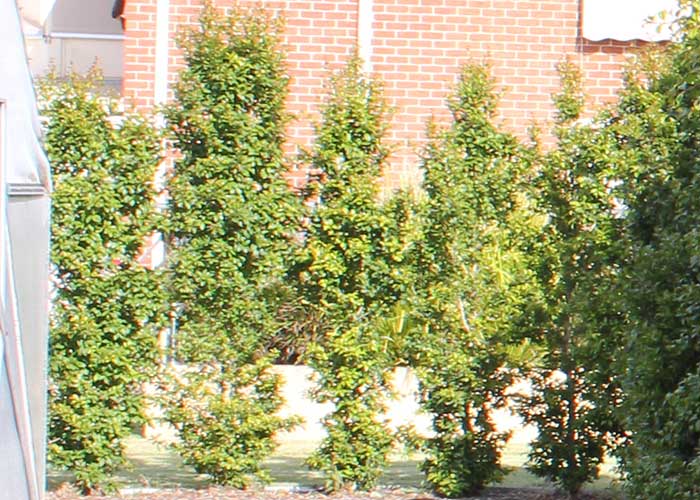
A more formal hedge which is kept tightly pruned and the height controlled will often be able to be more closely planted. For example Ozbreed Aussie Box® Westringia ‘WES02’ PBR can be spaced at 60 -75cm intervals for an informal hedge to 95cm tall, or more closely planted at 30-40cm intervals for a tightly clipped hedge of approximately 50cm tall. In subtropical climates this plant can grow as much as 50% larger and so can be spaced a little wider in these conditions.
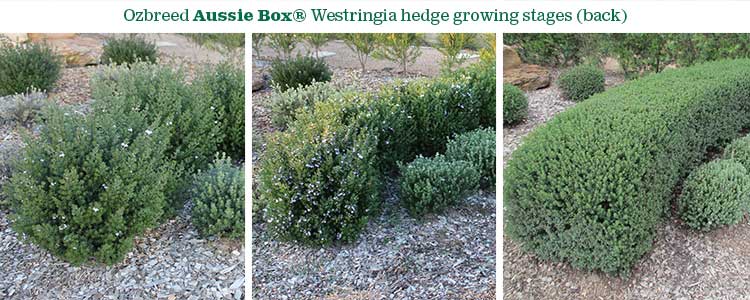
While these general rules will help guide spacing of your new hedge plants, you will need to consider your own situation in terms of your growing conditions and what size you want your hedge to be. Most suitable hedge plants are fast growing and dense by nature so whether you start with tubestock, 200ml pots or larger your spacing will remain the same although when starting with smaller plants it may take a year or two longer to get the hedge you are after.
*Article published by Kate Wall

